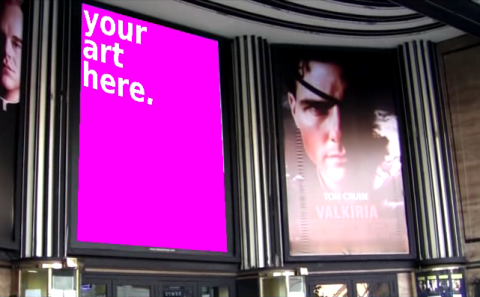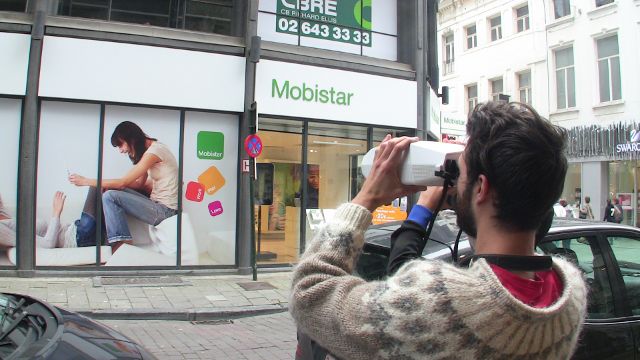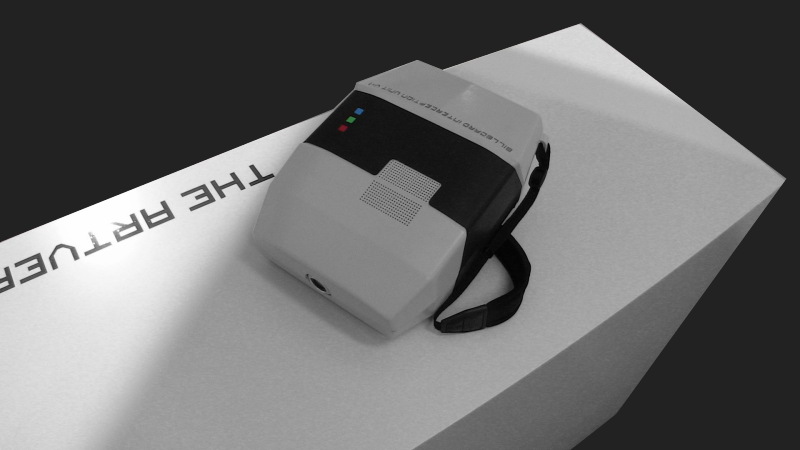
Short introduction
The Artvertiser is a software platform for replacing billboard advertisements with art in real-time. It works by teaching computers to 'recognise' individual advertisements so they can be easily replaced with alternative content, like images and video.Rather than refering to this as a form of Augmented Reality technology, we consider The Artvertiser an example of Improved Reality.
The project was initiated by Julian Oliver in February 2008 and has been developed in collaboration with Damian Stewart and Arturo Castro (Android port/rewrite). It has appeared in full working form in street exhibitions in Berlin as part of Transmediale 2010, in Brussels for the Europe wide Media Facades Festival, in four inner-city walks during Rotterdam's Image Festival and in Helsinki as part of an M-CULT public event and workshop.
The Artvertiser is also a free-software project and runs on Linux, Windows, OS X and Android systems.
Long introduction
The Artvertiser considers Puerta del Sol Madrid, Times Square New York, Shibuya Tokyo and other sites dense with advertisements as potential exhibition space. An instrument of conversion and reclamation, The Artvertiser situates the 'read-only', proprietary imagery of our public spaces as a 'read-write' platform for the presentation of non-proprietary, critically engaging content.
The Artvertiser software is trained to recognise individual advertisements, each of which become a virtual 'canvas' on which an artist can exhibit images or video when viewed through the hand-held device. We refer to this as Product Replacement.
After training, when ever the advertisement is exposed to the device, the chosen art will appear instead. It doesn't matter whether the advertisement is on a building, in a magazine or on the side of a vehicle.
If an internet connection is present at the site, the substitution can be immediately documented and published in on line galleries such as Flickr and YouTube, providing an alternative memory of the city.
While offering itself as a new platform for public art, The Artvertiser seeks to highlight the contradiction of Public Space in the context of what can and cannot be written on the surface of our cities.
By leveraging the internet as a redistribution mechanism, The Artvertiser supposes that an urban site dense with proprietary imagery can be re-purposed as an exhibition space for art and archived as such in turn. Similarly, on-site exhibitions can be held whereby pedestrians are invited to use the looking device to view an exhibition on the buildings around them.
Finally, non-live video can also be used. This enables artists to 'product replace' advertisements in film and video with alternative content and redistribute those movies with friends or using their favourite peer to peer network.
A third method of interception has been theorised by Julian and Danja Vasiliev, involving realtime Man-In-The-Middle attacks on a wireless computer network and subsequent alteration of streaming video. This will be developed at some point soon.
The Artvertiser has received development funding from Intermediae.
Team
Project leader: JulianComputer programming: Julian, Damian and Arturo Castro
Binoculars V-1: Julian, Clara Boj and Diego Diaz
Progress
The software is stable and works quite well. Currently it runs only on The Artvertiser's own digital binoculars, Android devices and netbooks/laptops with webcams. Developers are invited to download the code and help improve itThe Artvertiser targets three classes of device:

This device guarantees high-quality immersive advertisement substitution and is be more performant for AR applications than any hand-held device currently available; equipped with a high-quality wide-angle lens, fast CPU and GPU, powerful wireless adaptor, long battery life and plenty of solid state storage space. You can see The Billboard Interception Unit at work in the below videos.
A page of the original concept art by Julian can be seen here.
We currently have a working version for the Android OS.
The great bulk of the world's camera phones run the Symbian OS. We are drafting up a version of The Artvertiser to provide 'single shot' photo substitution.

Installing The Artvertiser on your computer
You can use your laptop/desktop with webcam as an Artvertiser testing ground. Adbust in the comfort of your own home!Click here for installers, source code and a HOWTO video getting you up and running with the platform.
Videos
Artvertising Berlin, Transmediale, Feb 2010 from Julian Oliver on Vimeo.
NOTE: one of the Billboard Interception Units was forced to resource an external battery, hence the big black cable coming out the side!
Julian Oliver - TEDxRotterdam 2010 from TEDxRotterdam on Vimeo.
Here's a great video review of The Artvertiser and other pieces at the Future Obscura exhibition, Transmediale 10 from respected hacker, activist and Free Software developer Jaromil. Thanks man!
Old videos:
Booking information
Get in contact if you'd like the Artvertiser at an event in your city.Conceptual References
They Live, directed by John Carpenter, 1988, imagines an Earth overrun by aliens that control citizens using subconscious instructions encoded into billboards. The dystopia is revealed to the hero when he stumbles across what appears to be a simple pair of sunglasses.Product Placement, WikiPedia article.
Diminished Reality was a conceptual project by Steve Mann and James Fung that explored re-purposing billboard advertisments as the basis of a messaging and navigation system using Augmented Reality technology. While the experiments were largely non-realtime and not actually experienced in the street, the project represents an important early exploration into 'product-replacement' using computer vision.
Related projects
Unlogo.org is a recent project that seeks to remove advertisements from archival video. The author Jeff Crouse cites The Artvertiser as a primary inspiration for the project, along with the excellent Add-art.


